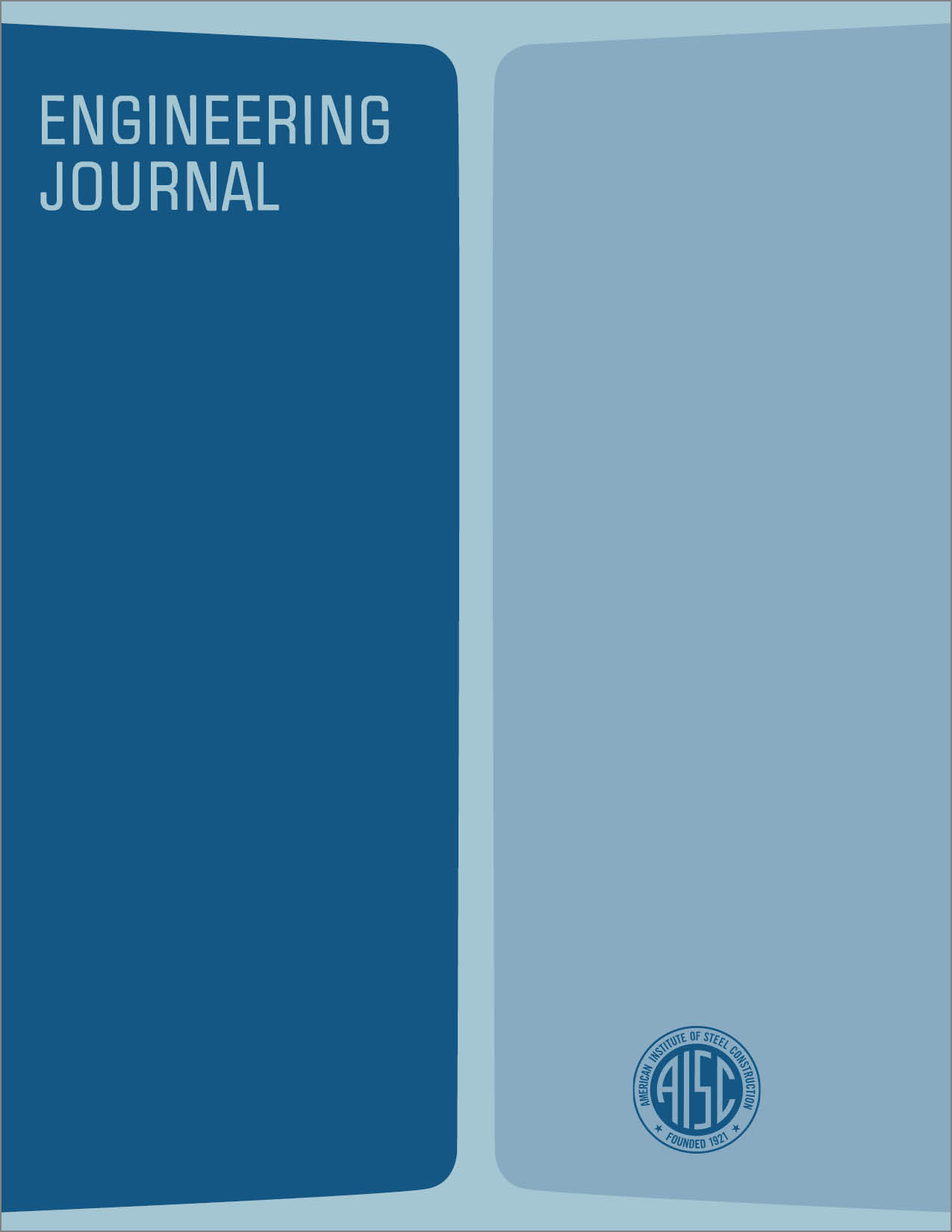Lateral Wind Bracing Requirements for Steel Composite Bridges
DOI:
https://doi.org/10.62913/engj.v19i3.383Abstract
The design of moderate multi-span composite bridges requires utilization of cross frame diaphragms between girders and bottom lateral wind bracing. The AASHTO code1 specifies that cross frames or diaphragms shall be provided at each end of the bridge and intermediate frames spaced at intervals not to exceed 25 ft. Previously, AASHTO specifications required that bottom lateral bracing should be provided, located near the bottom of the flange, on spans of 125 ft or longer, if the system has a concrete floor or a floor of equal rigidity. It is the intention of this paper to present the results of a recent study,2 which evaluated the effectiveness of bracing in redistributing wind load and formed the basis for the lateral bracing provisions of the 1982 AASHTO Interim Specifications. This effect has been determined by examining the response of single-span, multi-girder, composite bridges, when subjected to wind load. The bridges examined had span lengths of 80 ft, 120 ft, 180 ft, and 300 ft, with girder spacings of 6 ft, 10 ft, and 14 ft. The resulting response of these bridges indicates that the bottom lateral bracing has minimal effects on the redistribution of the wind load. The important parameter in load redistribution is the diaphragm spacing and span length. The utilization of cross diaphragms, in reducing the flange stresses due to wind loading, are given in a series of design equations.

